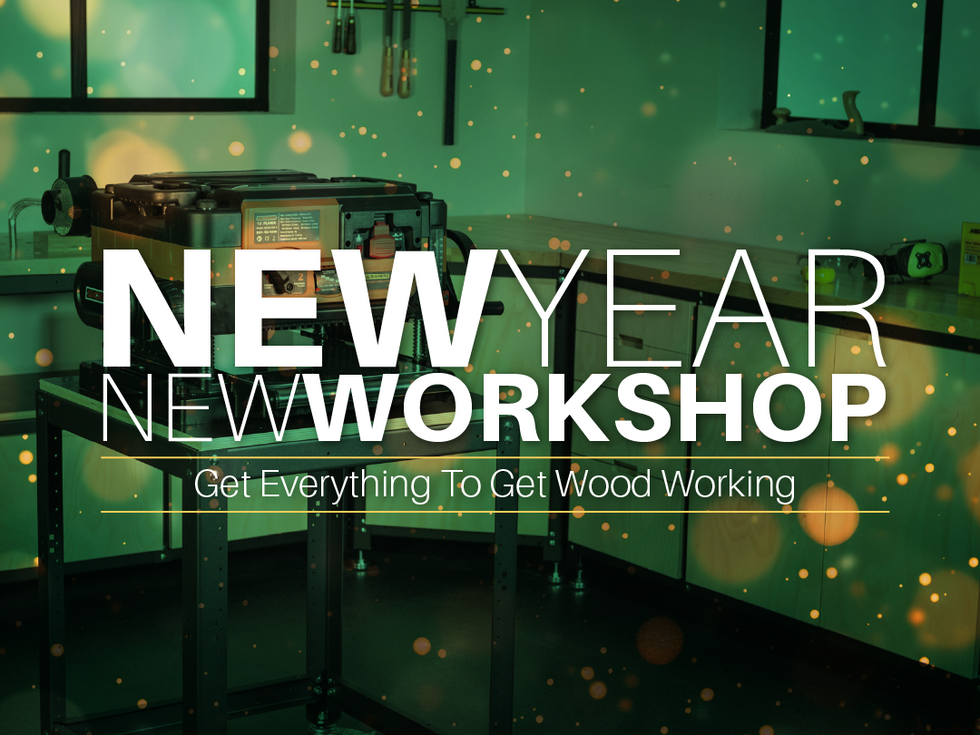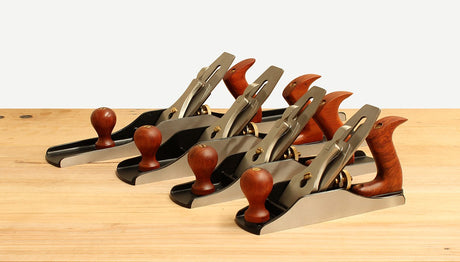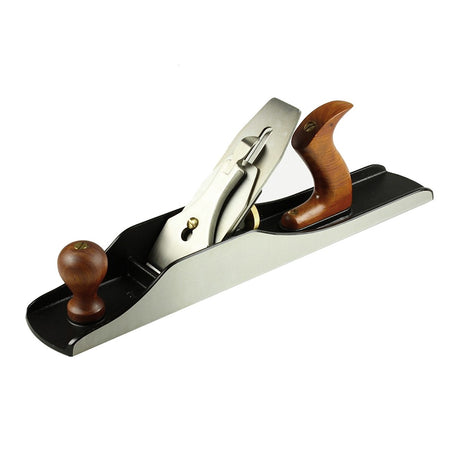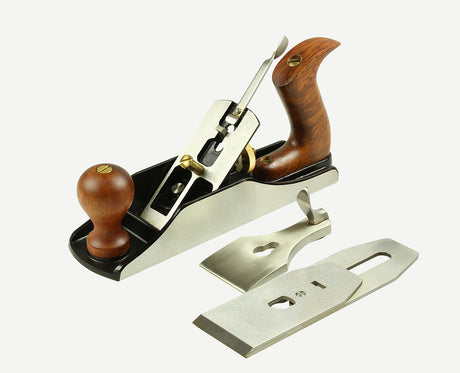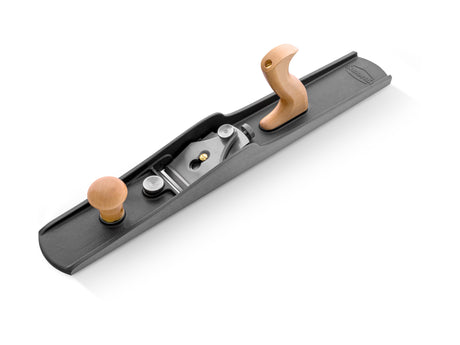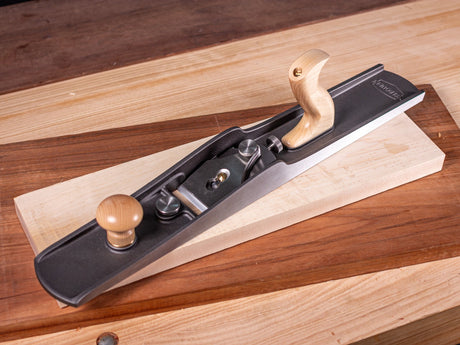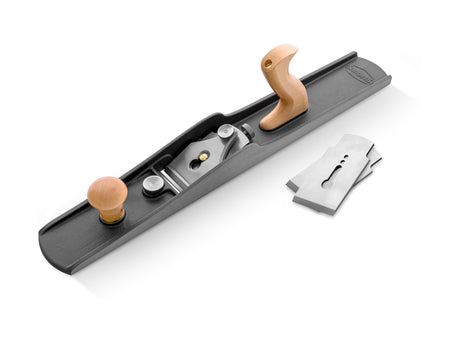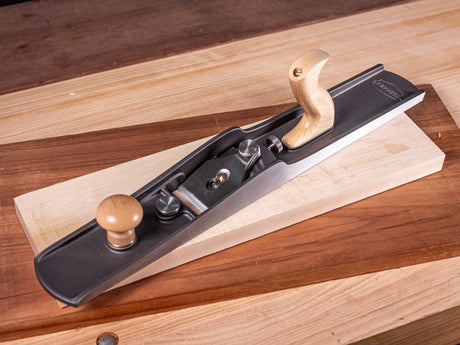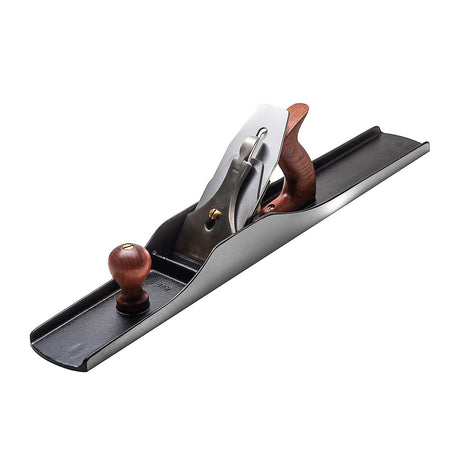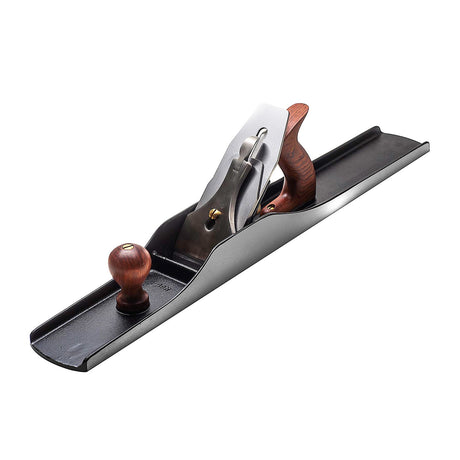Melbourne Tool Company
Melbourne Tool Company Low Angle Jointing Hand Plane
$425.00Unit price /UnavailableIn stockMelbourne Tool Company
Melbourne Tool Company Low Angle Jointing Plane Plus Additional Blades
$479.90$534.80Unit price /UnavailableIn stock
Achieving Flat and True Surfaces with Jointing Planes
Jointing planes, also known as jointer planes, are designed for flattening, straightening, and truing long boards. With lengths typically ranging from 18 to 24 inches, these planes bridge high and low spots across larger surfaces, ensuring flat edges for strong, seamless joints. They are essential for tasks like edge jointing boards for panel glue-ups or levelling wide surfaces before smoothing.
The length of a jointing plane allows it to register over broader areas of timber, skimming across inconsistencies and gradually creating a level surface. This makes them indispensable for hand-tool woodworkers who value precision and accuracy. A well-set jointing plane can eliminate the need for a thicknesser or jointer machine in many workshop situations.
Commonly available in No. 6 (fore plane) and No. 7 or 8 (true jointer) sizes, jointing planes often feature heavy cast iron bodies for stability, paired with thick blades. A flat sole is essential for accurate work, so regular maintenance and flattening are part of their upkeep. Some models include adjustable frogs, lateral adjustment levers, or even toothed blades for rougher initial passes.
When jointing boards by hand, it’s important to check progress frequently using winding sticks and a straightedge. With proper technique, a jointing plane can deliver edges that mate perfectly, ready for gluing. The ability to control the cut and feel the timber through the tool gives a level of feedback unmatched by power equipment, making jointing planes a favourite among traditional hand-tool enthusiasts.
FAQs
What is a jointing plane used for?
A jointing plane is used to flatten, straighten, and square timber surfaces, particularly for preparing board edges to be glued together or for levelling large panels.
What’s the difference between a jointer and a jack plane?
A jack plane is shorter (around 14") and used for general-purpose planing. A jointer plane is longer (18" to 24") and is better suited for flattening and truing longer boards due to its ability to bridge surface variations.
How long should a jointing plane be?
Jointing planes typically range from 18 inches (No. 6) to 24 inches (No. 8). The longer the plane, the more accurate it will be for creating flat, straight surfaces over long boards.
What is the best blade angle for a jointing plane?
Standard jointing planes use a 45° bed angle with a bevel-down blade. For hardwoods or figured grain, a higher effective angle (achieved via back bevel or high-angle frog) can help reduce tear-out.
Do I need to flatten the sole of my jointing plane?
Yes, a flat sole is critical for jointing accuracy. Check periodically with a straightedge and flatten as needed using abrasive paper on a flat reference surface like float glass or granite.
Is a No. 6 plane a jointer?
A No. 6 is often called a fore plane and sits between a jack and jointer in size. While it can perform jointing tasks on smaller boards, longer planes (No. 7 or 8) are better suited for precise edge and face jointing.
Can I joint edges without a power jointer?
Absolutely. With proper technique, a sharp and well-tuned jointing plane can produce edge joints as accurate as those from powered machines, often with more control and tactile feedback.
How do I check if my board is flat after using a jointing plane?
Use winding sticks to detect twist and a straightedge to check for flatness along and across the board. Adjust your planing accordingly to correct any high or low spots.
Is a jointing plane suitable for beginners?
Yes, though they require more attention to setup and technique due to their size. With practice, beginners can achieve excellent results and develop a deeper understanding of timber preparation.

